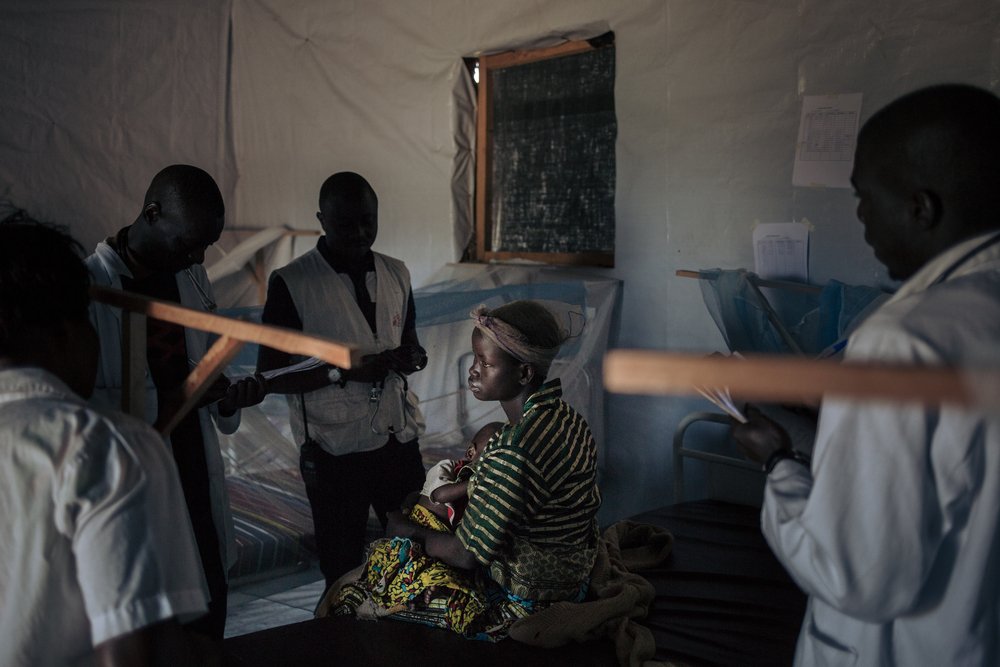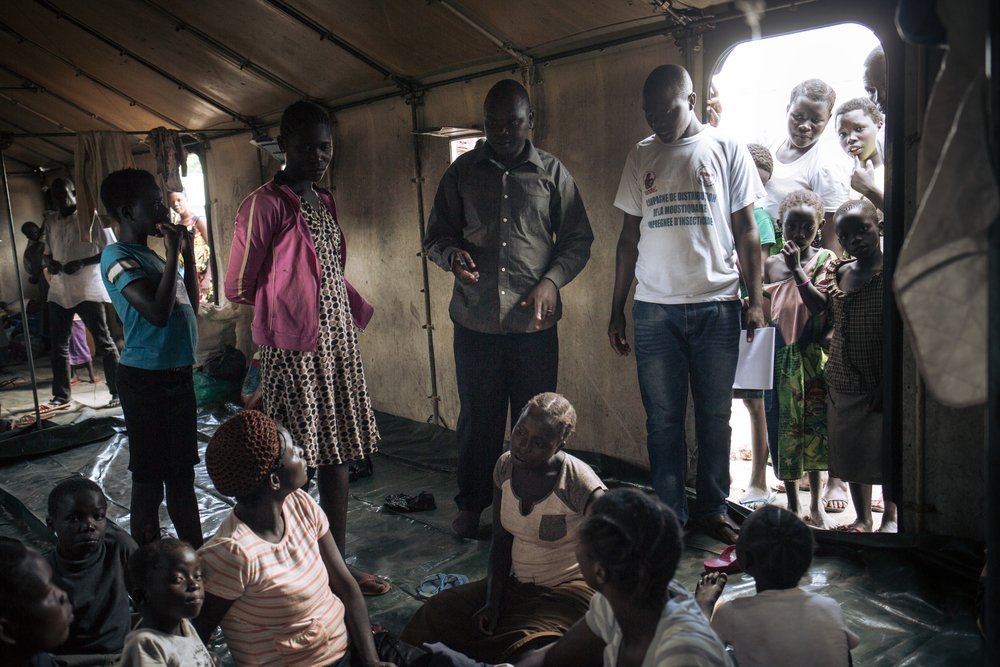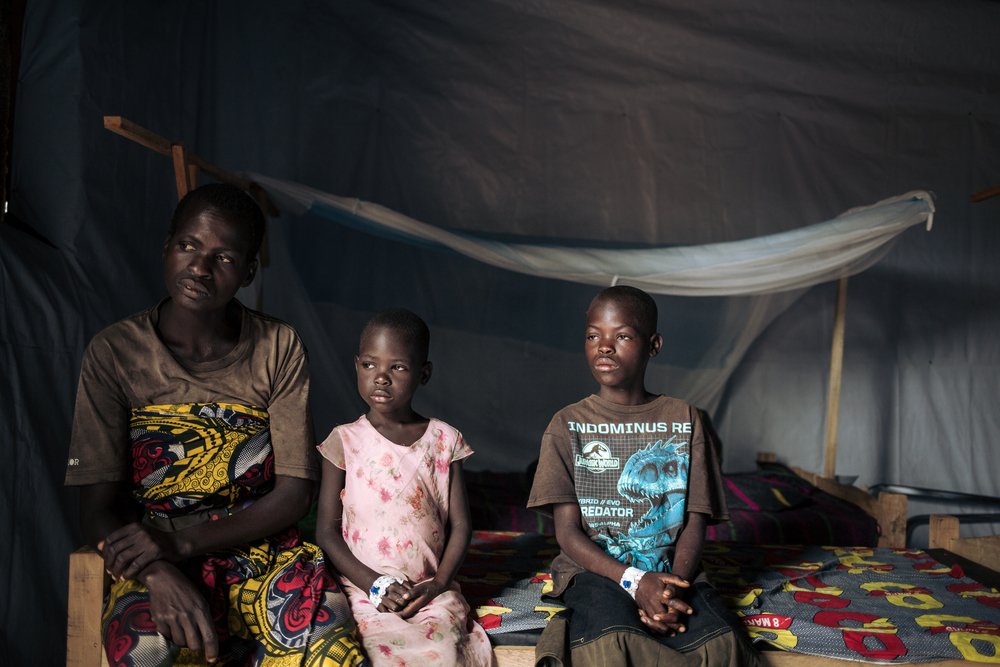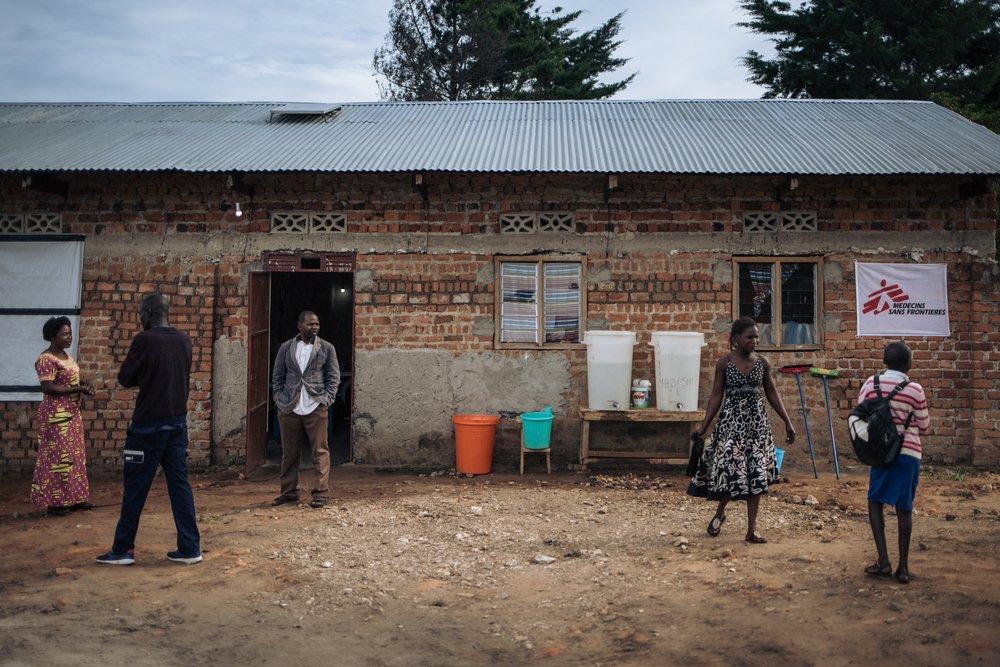Dr Nicolas Peyraud, an MSF vaccination referent, has just returned from several assignments in the Democratic Republic of Congo (DRC), where he helped to set up measles vaccination campaigns in collaboration with UNICEF and the Congolese Ministry of Health. In areas also affected by the Ebola outbreak, providing care for children suffering from measles and vaccinating those at risk pose additional challenges for health workers. Dr Peyraud explains these.
This is the first time that outbreaks of both measles and Ebola have occurred at such a large scale within the same geographical area. How does this present additional difficulties for healthcare providers?
In an area affected by Ebola, the vast majority of medical resources are mobilised to prevent the spread of the virus and manage suspected or confirmed cases of Ebola. When medical staff and equipment are already limited, epidemiological surveillance and medical care for patients may deteriorate for other diseases such as measles., Similarly, preventive activities, such as routine vaccinations, are drastically reduced. Indeed, measles immunisation coverage has declined significantly in Ebola transmission areas since the beginning of the epidemic in mid-2018.
Management of patient care is also a challenge, as measles patients and Ebola patients may have similar symptoms (fever, rash, vomiting or diarrhoea). This makes triage difficult for the teams in health centres as they are not always trained to correctly identify these two diseases. This can be a significant issue if a measles patient is hospitalised in an Ebola treatment centre (ETC) and vice versa.
Communities can often be reluctant to come to local health centres when they are sick, fearing being identified as suspected to have Ebola and then being isolated. It is therefore very complicated to manage two outbreaks of this scale at the same time, in the same place.

In this context of ‘double outbreaks’, how do our teams adapt to overcome these challenges?
First, to avoid the risk of contagion, triage at the entrance to the hospital or health centre allows people suspected to have Ebola to be referred directly to Ebola isolation centres, and measles patients to the dedicated unit. As measles is highly contagious, children hospitalised for measles are also isolated from other patients.
Then, the usual precautions to avoid the transmission of the disease are applied. These precautions, taken by health workers, include strict hand hygiene as well as using clean gloves and disinfecting medical equipment between each use. The same equipment should only be used in the unit where measles patients are isolated. Dedicated medical staff must also be immunised against this virus.
Finally, it is essential that hospitalised patients are assessed daily for any appearance of symptoms resembling Ebola, even if it is burdensome and laborious for the teams.
What additional measures are necessary to undertake measles vaccination in an Ebola context, in order to reduce the risk of transmission in communities?
In an area of active Ebola transmission, it is essential to put additional infection prevention and control measures in place whenever you have a large group of people gathered in the same location, as is the case with measles vaccination.
At the entrance to a vaccination site, an Ebola screening agent first takes the temperature of each person using a thermoflash (a thermometer that enables a person’s temperature to be taken without physical contact) and questions the accompanying people, asking if they have experienced symptoms such as fever, diarrhoea or vomiting during the last two days]. Children and those accompanying are invited to wash their hands. With these measures, the risk of a person with Ebola entering the vaccination site is extremely low.
Then, in the queue, the guardian checks that a certain distance is respected between each child. For each new child, the vaccinator is required to change gloves and wash their hands with a hydro-alcoholic solution. These additional procedures require more time, equipment and human resources, which means additional costs. The vaccination site is also organised differently in order to be able to respect these constraints.

But, in addition to these technical aspects, the most important thing is to engage communities. Vaccination campaigns cannot be effective if they don’t reach people. Indeed, mistrust of Ebola fosters rumours, which mean people only come for vaccination if they are convinced of the need to prevent serious illness in their children. Communities here are very familiar with measles and the danger it represents. However, communication is not enough to get them to come: they need to know that this vaccination activity is safe. Thus, vaccination sites are established at a distance from Ebola sites and health promoters inform families to help them understand the procedures and avoid rumours from spreading.
In July, we introduced the first measles vaccination in an Ebola context. Everything went smoothly and children in several health zones including Bunia and Ituri were vaccinated. We have therefore confirmed that it is possible to vaccinate against measles in an Ebola context, through ensuring specific measures are taken. This has reinforced the message that it is vital to vaccinate against measles even in these contexts, in order to prevent thousands of deaths from complications of the disease. Measles vaccination activities were carried out several months later throughout the country, taking into account the lessons learned from this first campaign. This was replicated in eight health zones in Ituri that were at high risk of Ebola transmission at that time.

What support does MSF provide for measles vaccination in the Ebola context, and why?
In July, our collaboration with UNICEF and the Congolese Ministry of Public Health achieved the vaccination of 4,320 children in Ituri. Measles vaccination strategies in the Ebola context have been refined and validated by the health authorities at both local and national levels. With MSF’s expertise in measles vaccination activities, we were able to provide technical support through the training of health personnel, alongside the Ministry of Health, UNICEF and the World Health Organization.
To conclude, there was a general awareness that the number of measles deaths was much higher than those due to Ebola, that this year the measles epidemic has already affected more than 280,600 people in the 26 provinces of the DRC, and that it was therefore not possible to prioritise only the Ebola response.
The benefit of vaccinating against measles was, therefore, greater than the risk of spreading Ebola caused by people gathering in groups to be vaccinated. Above all, together, we have proven that measles vaccinations in this context of deadly double outbreaks can be carried out correctly, through appropriate communication and measures. This opens great opportunities for us to contain these viruses that are devastating communities in the DRC.
